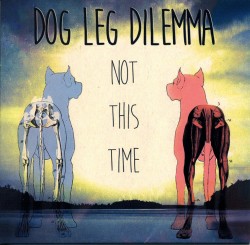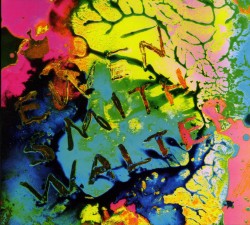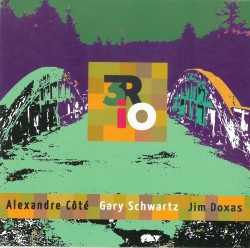Slovenia – of All Places – Continues Its Long Jazz Tradition
Perhaps now unfairly best known as the birthplace of Donald Trump’s most recent wife, Slovenia, the northern-most country of the former Yugoslavia, abutting Austria, Italy and Hungary, is a stable member of the European Union. Plus this tiny country, whose population of slightly more than two million is less than that of the city of Toronto, has long had an affiliation with the arts, especially improvised music. In fact, one of Slovenia’s jazz festival’s is 55 years old this year, making Canadian efforts seem like Johnny-come-latelies. Although better known in Europe than North America, several Slovenian players are also making their presence felt internationally.
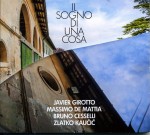 Veteran percussionist Zlatko Kaučič has, in his 40-year career, worked with everyone from Evan Parker to Paul Bley, playing in aggregations ranging from duos to big bands. He provides the underpinning for a live program on Il Sogno Di Una Cosa (Caligola 2213 caligola.it), in the company of Spanish saxophonist Javier Girotto and two Italians, pianist Bruno Cesselli and flutist Massimo De Mattia. With Italy so close, such cross-border collaborations are the norm rather than unique and, like Italian pasta complemented by Slovenian wine, the drummer’s accents help the others create a palatable repast. With all tunes composed by the quartet members, the horn players’ Mediterranean sensibility gives many melodies a sunny lightness. The dance-like sensibility is especially noticeable on Il sogno di una cosa, where Cesselli’s staccato chording and the drummer’s patterned rolls elasticize the peppy theme at the same time as Girotto’s soprano saxophone’s split tones break it at points. Tremolo piano lines create an extension midway between nursery rhyme and natural swing which De Mattia ornaments with pneumatic peeps. Kaučič enlivens De Mattia’s bass-register flute variations on Truth and Death, with its echoes of Ornette Coleman’s Lonely Woman, by regularizing the beat via mallets and kettle drum suggestions. Meanwhile the concluding Reflettiva, a Kaučič composition, cements and echoes moods expressed throughout the concert, aided by balanced puffs from the flutist and saxophonist. In contrast jagged flute calisthenics and a snorting ostinato from Girotto on Cerca cibo finds each player striving to bond musical atoms into a single tune that miraculously ends up swinging. Julijske barve, the drummer’s other composition, is also the most expansive, mixing hard keyboard stresses from Cesselli, percussion smacks and pops, a parallel flute exposition that coats the theme like a boot spray, and most spectacularly the saxophonist’s solo which moves from disruptive triple tonguing at the top to doubling back onto exposition, expressing reflective harmonies by the end.
Veteran percussionist Zlatko Kaučič has, in his 40-year career, worked with everyone from Evan Parker to Paul Bley, playing in aggregations ranging from duos to big bands. He provides the underpinning for a live program on Il Sogno Di Una Cosa (Caligola 2213 caligola.it), in the company of Spanish saxophonist Javier Girotto and two Italians, pianist Bruno Cesselli and flutist Massimo De Mattia. With Italy so close, such cross-border collaborations are the norm rather than unique and, like Italian pasta complemented by Slovenian wine, the drummer’s accents help the others create a palatable repast. With all tunes composed by the quartet members, the horn players’ Mediterranean sensibility gives many melodies a sunny lightness. The dance-like sensibility is especially noticeable on Il sogno di una cosa, where Cesselli’s staccato chording and the drummer’s patterned rolls elasticize the peppy theme at the same time as Girotto’s soprano saxophone’s split tones break it at points. Tremolo piano lines create an extension midway between nursery rhyme and natural swing which De Mattia ornaments with pneumatic peeps. Kaučič enlivens De Mattia’s bass-register flute variations on Truth and Death, with its echoes of Ornette Coleman’s Lonely Woman, by regularizing the beat via mallets and kettle drum suggestions. Meanwhile the concluding Reflettiva, a Kaučič composition, cements and echoes moods expressed throughout the concert, aided by balanced puffs from the flutist and saxophonist. In contrast jagged flute calisthenics and a snorting ostinato from Girotto on Cerca cibo finds each player striving to bond musical atoms into a single tune that miraculously ends up swinging. Julijske barve, the drummer’s other composition, is also the most expansive, mixing hard keyboard stresses from Cesselli, percussion smacks and pops, a parallel flute exposition that coats the theme like a boot spray, and most spectacularly the saxophonist’s solo which moves from disruptive triple tonguing at the top to doubling back onto exposition, expressing reflective harmonies by the end.
 A younger percussionist following Kaučič’s breadth of expression is Marko Lasič. His groove, refined with cymbal slaps, maracas-like shakes and positioned clatters defines the bottom of the eight-part The Labour Suite (giovannimaier.it). Composed by and directed by Italian bassist Giovanni Maier, who often works with Kaučič, he and the other members of the Kača, Sraka in Lev Quintet – cornetist Gabriele Cancelli, bass clarinetist Mimo Cogliandro and flutist Paolo Pascolo – display sophisticated jazz smarts while confirming the advantage of equitable cross-border creation. Built up from the bassist’s droning ostinato and drummer’s pops and smacks, the narrative soon surges into a pumping stop-time theme that allows each of the musician-workers to demonstrate his contribution to the means of production. Transforming assembly-line precision into faultless swing which makes the group sound larger than it is, Cancelli’s clear grace notes and Cogliandro’s elastic triple tonguing create a contrapuntal proletarian challenge to Pascolo’s upper management-like penthouse twitters. With Maier’s walking bass sometimes doubling the horn players’ exposition, the suite reaches its climax on The Labour Suite part #5 and The Labour Suite part #6 as the musicians join for a cohesively layered improvisation, with flute peeps on top, plunger excavations from the cornet in the middle and ratcheting vibrations from the bass clarinet on the bottom. Coupling and splintering into duos and trios with amoeba-like intensity, the matches between various instruments are finally curtailed and the prevailing theme reasserted by Maier’s slurred fingering with Lasič’s rebounding strokes seconding him. Like a play’s cast taking their bows, each soloist then illustrates his sonic talents as a coda, with each speciality backed by drum double thumping.
A younger percussionist following Kaučič’s breadth of expression is Marko Lasič. His groove, refined with cymbal slaps, maracas-like shakes and positioned clatters defines the bottom of the eight-part The Labour Suite (giovannimaier.it). Composed by and directed by Italian bassist Giovanni Maier, who often works with Kaučič, he and the other members of the Kača, Sraka in Lev Quintet – cornetist Gabriele Cancelli, bass clarinetist Mimo Cogliandro and flutist Paolo Pascolo – display sophisticated jazz smarts while confirming the advantage of equitable cross-border creation. Built up from the bassist’s droning ostinato and drummer’s pops and smacks, the narrative soon surges into a pumping stop-time theme that allows each of the musician-workers to demonstrate his contribution to the means of production. Transforming assembly-line precision into faultless swing which makes the group sound larger than it is, Cancelli’s clear grace notes and Cogliandro’s elastic triple tonguing create a contrapuntal proletarian challenge to Pascolo’s upper management-like penthouse twitters. With Maier’s walking bass sometimes doubling the horn players’ exposition, the suite reaches its climax on The Labour Suite part #5 and The Labour Suite part #6 as the musicians join for a cohesively layered improvisation, with flute peeps on top, plunger excavations from the cornet in the middle and ratcheting vibrations from the bass clarinet on the bottom. Coupling and splintering into duos and trios with amoeba-like intensity, the matches between various instruments are finally curtailed and the prevailing theme reasserted by Maier’s slurred fingering with Lasič’s rebounding strokes seconding him. Like a play’s cast taking their bows, each soloist then illustrates his sonic talents as a coda, with each speciality backed by drum double thumping.
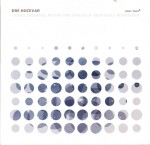 Dre Hocevar, another Slovenian percussionist, takes group music in another direction. Established in New York, his Transcendental Within the Sphere of Indivisible Remainder (Clean Feed CF 393 CD cleanfeed-records.com), played by a mixed European-North American nonet is a composition that mixes jazz elements via the saxophones of Bryan Qu and Mette Rasmussen and Aaron Larson Tevis’ trumpet, notated music suggestions via pianist Jeremy Corren, cellist Lester St. Louis and bassist Henry Fraser, plus upfront judder and drones sourced from Zack Clarke’s synthesizer and Sam Pluta’s live electronics and signal processing. During its 48 minutes the polyphonic piece could be an offspring of John Coltrane’s Ascension and Karlheinz Stockhausen’s Electronic Studies. Although blurry electronic gurgles dominate the initial sequence, the processing gradually makes room for hunt-and-peck pianism and Tevis’ grace notes and reed squeals. From that point, like parallel props needed to shore up a house, the composition shows disparate faces at different times. At one junction the rubbing staccato strings and ghostly vibrations from the horns put the track firmly in free jazz territory; shortly afterwards watery growls and oscillated grumbles celebrate the rise of electronic pulses. Throughout, Hocevar uses his cymbal resonation as a sort of J. Arthur Rank-like place marker, keeping the multiphonic interaction from becoming so opaque that all players can be heard. With each musician given space, the composition is never overloaded enough to slide into any one genre. Eventually the thickened brew reaches its simmering climax and in the final sequence downshifts tacitly so that reed whines, computer gulps and a string ostinato have the same weight and bond. The composer’s single cymbal clap, like a period at the end of a sentence, confirms the conclusion.
Dre Hocevar, another Slovenian percussionist, takes group music in another direction. Established in New York, his Transcendental Within the Sphere of Indivisible Remainder (Clean Feed CF 393 CD cleanfeed-records.com), played by a mixed European-North American nonet is a composition that mixes jazz elements via the saxophones of Bryan Qu and Mette Rasmussen and Aaron Larson Tevis’ trumpet, notated music suggestions via pianist Jeremy Corren, cellist Lester St. Louis and bassist Henry Fraser, plus upfront judder and drones sourced from Zack Clarke’s synthesizer and Sam Pluta’s live electronics and signal processing. During its 48 minutes the polyphonic piece could be an offspring of John Coltrane’s Ascension and Karlheinz Stockhausen’s Electronic Studies. Although blurry electronic gurgles dominate the initial sequence, the processing gradually makes room for hunt-and-peck pianism and Tevis’ grace notes and reed squeals. From that point, like parallel props needed to shore up a house, the composition shows disparate faces at different times. At one junction the rubbing staccato strings and ghostly vibrations from the horns put the track firmly in free jazz territory; shortly afterwards watery growls and oscillated grumbles celebrate the rise of electronic pulses. Throughout, Hocevar uses his cymbal resonation as a sort of J. Arthur Rank-like place marker, keeping the multiphonic interaction from becoming so opaque that all players can be heard. With each musician given space, the composition is never overloaded enough to slide into any one genre. Eventually the thickened brew reaches its simmering climax and in the final sequence downshifts tacitly so that reed whines, computer gulps and a string ostinato have the same weight and bond. The composer’s single cymbal clap, like a period at the end of a sentence, confirms the conclusion.
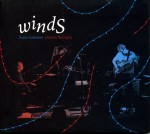 Despite appearances, all Slovenian improvisers aren’t drummers. Another player with an international profile is guitarist Samo Salamon, whose most recent CD is a chamber-styled duo with Italian pianist Stefano Battaglia. Although titled windS (Klopotec Records IZK CD 03 samosalamon.com), the effect is distinctively percussive not airy, with Battaglia’s stopped vibraphone-like key strokes creating a juddering continuum on top of which Salamon and Battaglia intersect with variants that range from romantic to rugged. This is especially notable on Hammer where the excitement level rises as the pianist’s pummelling pops, following an emotional single-string solo from the guitarist. This same sort of wispy invention is present on Girl with a Nicotine Kiss as Battaglia’s elaborations are melded with vocalized single notes from Salamon. Moving through echoing chords from both string sets, the CD attains its climax with the concluding Sleepy Burja. Here, wavering whistles from both instruments suggest the sort of wind rustling that the set celebrates.
Despite appearances, all Slovenian improvisers aren’t drummers. Another player with an international profile is guitarist Samo Salamon, whose most recent CD is a chamber-styled duo with Italian pianist Stefano Battaglia. Although titled windS (Klopotec Records IZK CD 03 samosalamon.com), the effect is distinctively percussive not airy, with Battaglia’s stopped vibraphone-like key strokes creating a juddering continuum on top of which Salamon and Battaglia intersect with variants that range from romantic to rugged. This is especially notable on Hammer where the excitement level rises as the pianist’s pummelling pops, following an emotional single-string solo from the guitarist. This same sort of wispy invention is present on Girl with a Nicotine Kiss as Battaglia’s elaborations are melded with vocalized single notes from Salamon. Moving through echoing chords from both string sets, the CD attains its climax with the concluding Sleepy Burja. Here, wavering whistles from both instruments suggest the sort of wind rustling that the set celebrates.
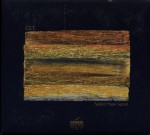 Of course, Slovenia isn’t the only part of the former Yugoslavia with innovative musicians. For the past several years Serbian violist Szilárd Mezei has had his compositions played by different-sized local ensembles, whose nucleus is the Septet featured on CET (Odradek Records ODR CD 506 odradek-records.com). A member of Serbia’s Hungarian minority, his seven compositions here are infectious, hummable and rhythmically sophisticated, with room for cerebral solos, yet with themes that allow the entire band to function as one. A composition like the diagram-titled second track for instance moves from Magyar intonation to a Middle Eastern melody, working through Máté Pozsár’s piano vibrations to Branislav Aksin’s trombone tones, climaxing in tutti cross-fertilization with echoes of the earlier themes. Modern influences aren’t far from the surface either. For example, the chirpy almost whistleable melody that characterizes the title track encompassing bellicose counterpoint between strings and horns could be a theme from a cop show that becomes a hit song on its own. Mezei’s fiddle taps, contrasting with the trombonist’s pushes and growling bass clarinet from Bogdan Rankovič, bring the same sort of private eye-like toughness to Hep 10. The violist also manages to replicate the equivalent of an elephant fitting into a kids’ wading pool by shrinking symphonic traditions into this unit. Tracks such as None Step and Elm convey clear usage of 19th-century traditions from so-called classical music. But nothing is that simple since Elm adds double bass strokes, tremolo piano fills and swinging percussion rattles that surge beneath a keening altissimo showcase for Rankovič’s alto saxophone. Subtitled Hommage à Mal Waldron, None Step incongruously incorporates obvious romantic-era references with arco echoes from Ervin Malina’s double bass while advancing the tune in tonal variations. Finally a combination of Pozár’s rugged comping and Mezei’s brittle strokes resurrect the initial theme with hints of Waldron’s boppish toughness.
Of course, Slovenia isn’t the only part of the former Yugoslavia with innovative musicians. For the past several years Serbian violist Szilárd Mezei has had his compositions played by different-sized local ensembles, whose nucleus is the Septet featured on CET (Odradek Records ODR CD 506 odradek-records.com). A member of Serbia’s Hungarian minority, his seven compositions here are infectious, hummable and rhythmically sophisticated, with room for cerebral solos, yet with themes that allow the entire band to function as one. A composition like the diagram-titled second track for instance moves from Magyar intonation to a Middle Eastern melody, working through Máté Pozsár’s piano vibrations to Branislav Aksin’s trombone tones, climaxing in tutti cross-fertilization with echoes of the earlier themes. Modern influences aren’t far from the surface either. For example, the chirpy almost whistleable melody that characterizes the title track encompassing bellicose counterpoint between strings and horns could be a theme from a cop show that becomes a hit song on its own. Mezei’s fiddle taps, contrasting with the trombonist’s pushes and growling bass clarinet from Bogdan Rankovič, bring the same sort of private eye-like toughness to Hep 10. The violist also manages to replicate the equivalent of an elephant fitting into a kids’ wading pool by shrinking symphonic traditions into this unit. Tracks such as None Step and Elm convey clear usage of 19th-century traditions from so-called classical music. But nothing is that simple since Elm adds double bass strokes, tremolo piano fills and swinging percussion rattles that surge beneath a keening altissimo showcase for Rankovič’s alto saxophone. Subtitled Hommage à Mal Waldron, None Step incongruously incorporates obvious romantic-era references with arco echoes from Ervin Malina’s double bass while advancing the tune in tonal variations. Finally a combination of Pozár’s rugged comping and Mezei’s brittle strokes resurrect the initial theme with hints of Waldron’s boppish toughness.
Over the past few decades many parts of the former Yugoslavia have suffered from military incursions and political instability. While the first groups mentioned here substantiate the notion that Slovenia’s stability helps promote stimulating musical sounds, paradoxically Mezei’s work does the same for more rambunctious Serbia.
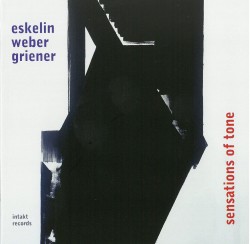 Sensations of Tone
Sensations of Tone

